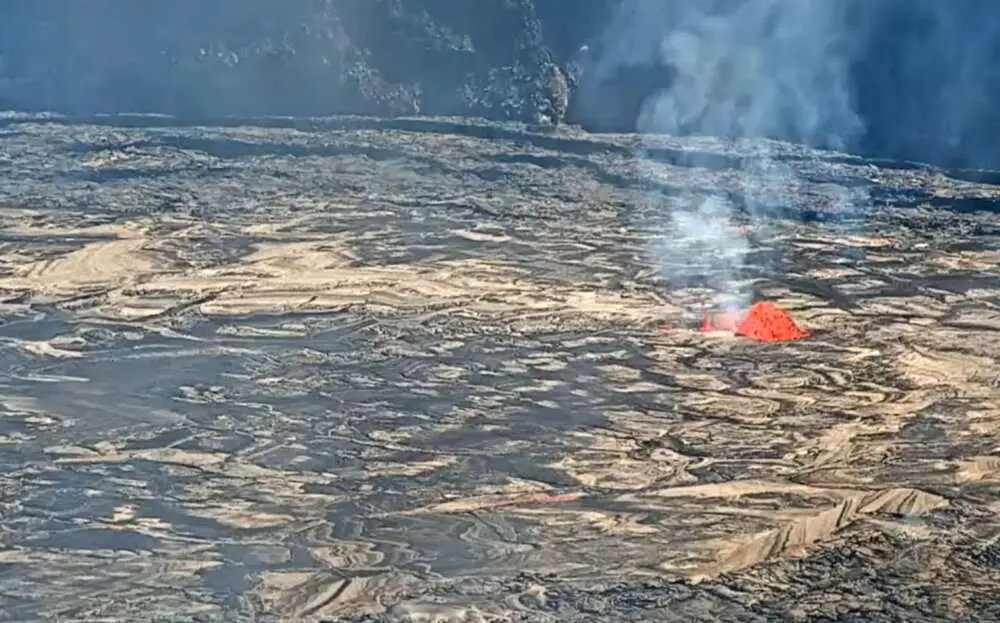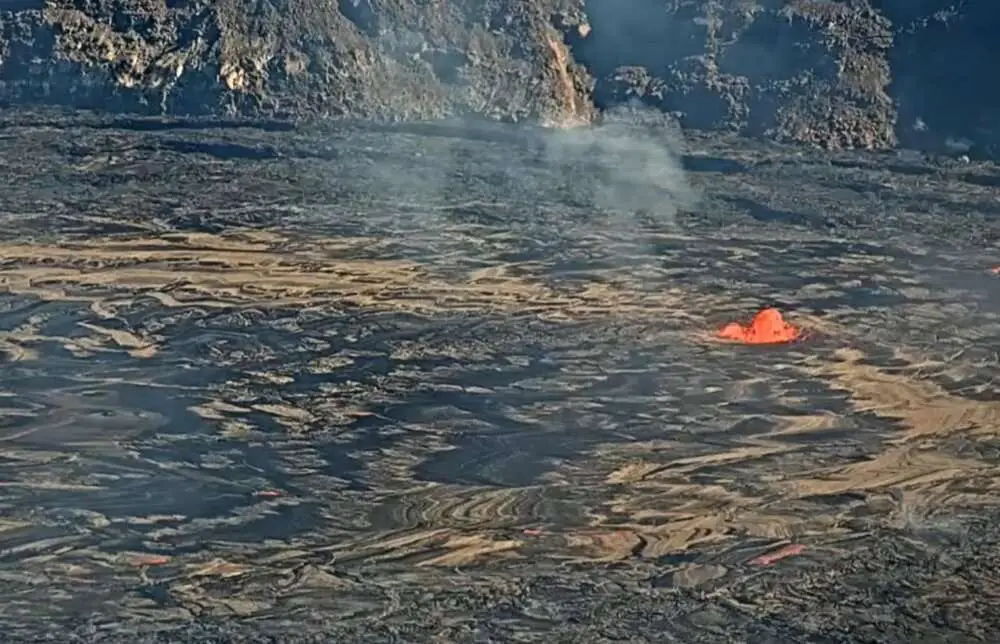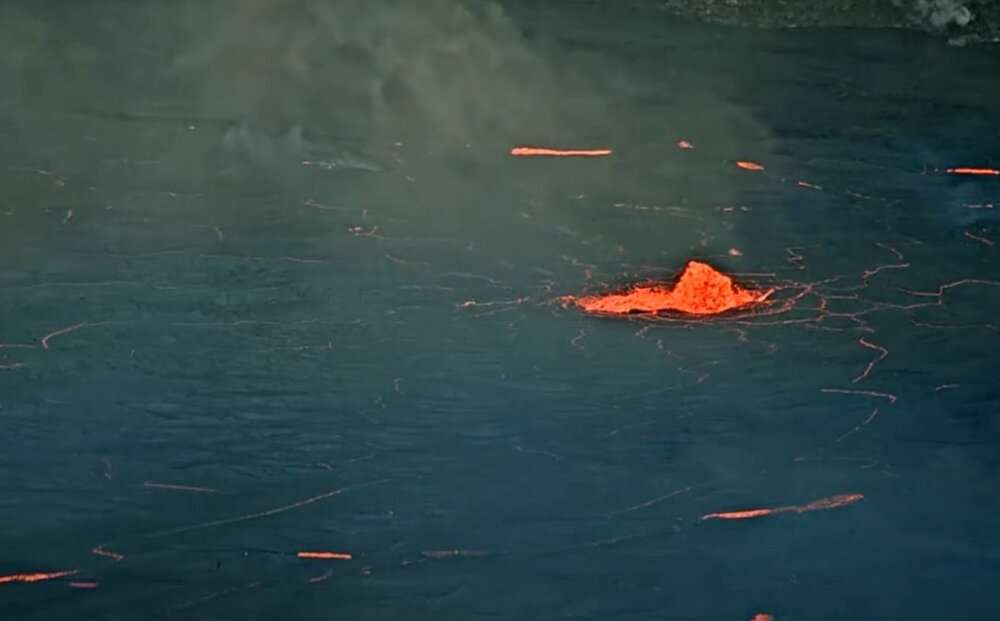This otherworldly footage shows Kilauea Volcano in Hawaii spewing red-hot lava through its thick crust.
Activity since 8th January has seen the 4,090-foot live volcano throw thousands of tonnes of sulphur dioxide into the atmosphere.
Gas released during the eruptions has created volcanic smog – known as vog – posing a health hazard for locals, as well as for crops and livestock.
People have also been warned about the dangers of Pele’s hair, the name of thin strands of volcanic glass that can irritate the skin and eyes.
In a statement on 9th January, the USGS (United States Geological Survey) Hawaiian Volcano Observatory said: “The summit eruption of Kīlauea Volcano, within Halemaʻumaʻu crater, continued over the past 24 hours.
“All recent eruptive activity has been confined to the crater. No significant changes have been observed at the summit or in either rift zone.
“Eruption of lava from vents on the central eastern portion of Halemaʻumaʻu crater floor continued over the past 24 hours. Activity is concentrated in the eastern half of the crater and within the basin in the western half of the crater that was the focus of activity in 2021–2022.

“The active lava area in the eastern half of the crater now has one dominent fountain, and the active area has shrunk slightly over the past 24 hours.
“Summit tiltmeters recorded inflation over the past 24 hours. Volcanic tremor remains above background levels. A sulfur dioxide (SO2) emission rate of approximately 4,000 tonnes per day (t/d) was measured yesterday, January 8, 2023.
“No unusual activity has been noted along the East Rift Zone or Southwest Rift Zone; low rates of ground deformation and seismicity continue along both. Measurements from continuous gas monitoring stations downwind of Puʻuʻōʻō in the middle East Rift Zone remain below detection limits for SO2, indicating that SO2 emissions from Puʻuʻōʻō are negligible.
“This eruption at Kīlauea’s summit is occurring within a closed area of Hawaiʻi Volcanoes National Park.
“High levels of volcanic gas are the primary hazard of concern, as this hazard can have far-reaching effects downwind. Large amounts of volcanic gas—primarily water vapor (H2O), carbon dioxide (CO2), and sulfur dioxide (SO2)—are continuously released during eruptions of Kīlauea Volcano.
“As SO2 is released from the summit, it reacts in the atmosphere to create the visible haze known as vog (volcanic smog) that has been observed downwind of Kīlauea.

“Vog creates the potential for airborne health hazards to residents and visitors, damages agricultural crops and other plants, and affects livestock.
“Additional hazards include Pele’s hair and other lightweight volcanic glass fragments from lava fountains that will fall downwind and dust the ground within a few hundred meters (yards) of the erupting fissure vent(s). Strong winds may waft lighter particles to greater distances.
“Residents should minimize exposure to these volcanic particles, which can cause skin and eye irritation.
“Other significant hazards also remain around Kīlauea caldera from Halemaʻumaʻu crater wall instability, ground cracking, and rockfalls that can be enhanced by earthquakes within the area closed to the public.
“This underscores the extremely hazardous nature of the rim surrounding Halemaʻumaʻu crater, an area that has been closed to the public since early 2008.”
Kilauea is the world’s most active volcanic mass and is the central feature of Hawaii Volcanoes National Park.

Its caldera is nearly three miles long and two miles wide with an area of more than four square miles.



